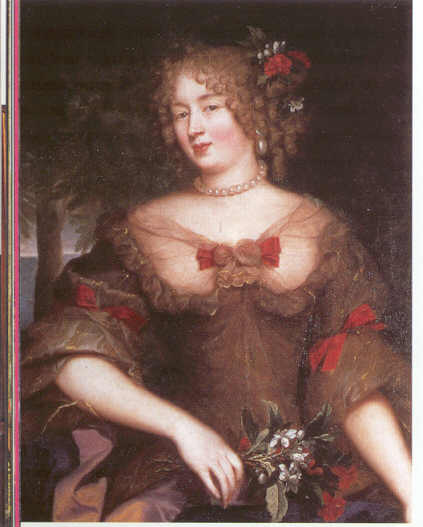Crown Perfumery Maréchale 90 {Perfume Review & Musings}

Maréchale 90 is the modern 1994 reformulation of the original Eau à la Maréchale created in 1669 for la Maréchale d'Aumont wife of Antoine d'Aumont. Her name is also attached to a powdery concoction for hair and wigs called "Poudre à la Maréchale" which she had created herself. It is reported that the air in the salons was heavily perfumed with this powder covering many an aristocrat's head. References to this preparation can be found in 19th century French literature where it designates a face powder as well. According to the Société Française des Parfumeurs this perfumed powder originally comprised orris, coriander, clove, calamus root, and sedge...

I do not know if there really exists an archived original recipe for the Eau à la Maréchale (d'Aumont). But there certainly were different recipes for it. This eau was considered to form a category of perfumes just as we would consider chypre to constitute a category of perfumes comprising a certain basic combination of ingredients. We find one such recipe for the so-called Bouquet à la Maréchale in The Art of Perfumery and the Methods of Obtaining the Odors of Plants: with instructions for the manufacture of perfumes for the handkerchief, scented powders, odorous vinegars, dentrifices, pomatums, cosmetiques, perfumed soap etc. : with an appendix on the colors of flowers, artificial fruit essences, etc., etc. by G.W. Septimus Piesse (1857). (I couldn't resist, I had to write down this title; it is so quaint.)
A Bouquet à la Maréchale would be prepared and then sometimes incorporated in the recipe of another perfume or could be used on its own. Septimus Piesse gives the following ingredients:
Esprit de rose triple, } } of each, 1 pint. Extrait de fleur d'orange, }
" vitivert, } " vanilla, } " orris, } of each, 1/2 " " tonquin, } Esprit de neroli, } Extract of musk, } of each, 1/4 pint. " ambergris, } Otto of cloves, } of each, 1/2 drachm. " santal, }
In Maréchale 90 by Crown Perfumery we find the rose (very prominent), the clove, and the orris (also significant), amber, and musk forming a fairly characteristic combination of notes. We are told that Maréchale 90 contains as well bergamot, ylang, galbanum, basil, patchouli, cistus, jasmine, muguet, and cardamom. Both descriptions reveal that the scent will be a green, spicy, powdery floral.
The contemporary Eau à la Maréchale retains much of its ancient characteristics with a new emphasis on bergamot. Yet, it does not smell "modernized". It is quite the opposite in fact as it offers the style of a primitive perfume. To me, it smells of a very natural rose, one that is not prettied-up. It is closer to rose essential oil which does not necessarily smell good in its natural state. It is a very herbal rose, if you will. Moreover, it makes me think not of the fresh petals of a rose flower but rather of dried petals of rose with their slightly metallic, old, dusty paper-like smell. For a short moment one sniffs a perfume that seems to be one of controlled and adverted decay. The perfume evokes for me a pot-pourri made out of dried petals and it is not possible for me to conjure up a fresh flower. In this sense, the reference that is made here is authentic; it refers more to the brute nature of the rose, to the rose as raw material rather than to a "realistic" rendition of the rose as ensconced in a bed of flowers seemingly alive to your imagination while certainly dead if it is to be found in a perfume.
I distinguish two main periods in the perfume: A very luminous stage supported by the the high-pitched notes of bergamot and use of green notes; it is the day and the perfume has a remarkable luminosity to it. Then, later, without transition, it is dusk; the perfume loses some of its stridency, abates, softens down and becomes a little sweet. It becomes gentler, duskier and more powdery. My mind envisions once again a pot-pourri due to the orris.
Maréchale 90 is beautiful like the beautiful portrait of a 17th century or even 18th century lady. It is not pretty; it is a very natural beauty whose hands are making a rose pot-pourri from the flowers picked in her garden or who is wearing a perfume that her perfumer made with natural ingredients.
You can buy a 50 ml bottle for $85 at Parfums Raffy. The Crown Perfumery line is unfortunately discontinued. You can also find the occasional bottle and some samples of it on eBay.
Photo credit: Parfums Raffy (this is an image of the orignal Maréchale; 1 bottle is available for $2500.)
Portrait of Marie de Rabutin-Chantal better known as the Marquise de Sévigné.









What a lovely description of this perfume. I feel exactly like this about it but you are much better than I am at expressing it. I know this post is a few years old now but I thought I would say hello and thank you,
Dominique